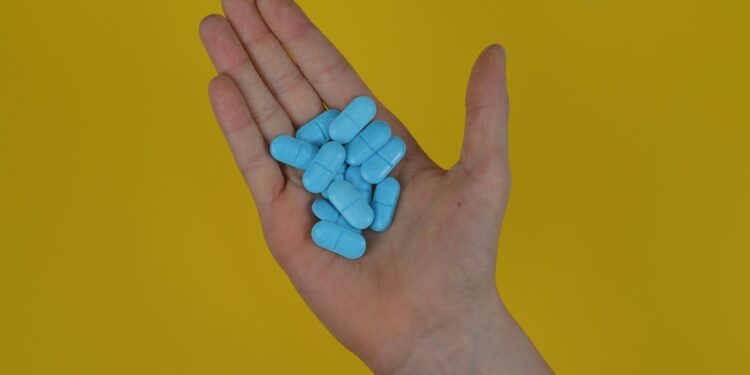The most influential doctor in America might be your television.
In the first quarter of 2025, direct-to-consumer (DTC) pharmaceutical advertising spending reached a historic peak, with a double-digit percentage increase over the same period last year, according to Kantar Media and IQVIA. The surge was driven primarily by the runaway popularity of GLP-1 receptor agonists—injectable medications originally approved for diabetes but now best known as blockbuster weight-loss drugs under brand names like Ozempic, Wegovy, and Zepbound.
In parallel, Google Trends reported that the phrase “weight-loss-drug commercials” became a breakout search term in April and May, triggered by a flood of primetime ads featuring upbeat jingles, sweeping desert vistas, and testimonials of transformation.
But this boom in DTC advertising isn’t just about marketing. It’s reshaping how Americans engage with medicine, perceive their health, and seek care. And it’s raising new questions about ethics, regulation, and the pharmaceutical industry’s evolving role in public life.
A Brief History of a Controversial Practice
The United States is one of only two countries in the world—alongside New Zealand—that permits direct-to-consumer advertising of prescription drugs. Since the FDA’s 1997 loosening of ad restrictions, DTC marketing has exploded into a multibillion-dollar industry, targeting consumers not just through traditional TV and print, but increasingly through digital channels, influencer partnerships, and streaming platforms.
The original rationale was empowerment: to make patients more informed, more engaged, and more proactive in managing their health.
But over time, critics argue, DTC ads have evolved into highly stylized, emotionally manipulative sales pitches, encouraging patients to ask for medications by brand name and placing physicians in the uncomfortable role of gatekeeper between marketing and medicine.
“These ads blur the distinction between medical advice and commercial persuasion,” says Dr. Tim Faber, professor of medical ethics at NYU. “They commodify the doctor-patient relationship, turning treatment into transaction.”
The GLP-1 Effect: Why Everyone Is Selling Weight Loss
The DTC ad surge in 2025 is inseparable from the rise of GLP-1 receptor agonists, a class of drugs that includes semaglutide (Ozempic, Wegovy) and tirzepatide (Zepbound, Mounjaro). Originally developed to regulate blood sugar in type 2 diabetes, these drugs also suppress appetite and have shown significant efficacy in producing double-digit weight loss—making them the centerpiece of a new wave of obesity therapeutics.
The commercials are everywhere. Zepbound’s latest campaign, aired during the NFL Draft and The Bachelor finale, featured smiling, active women over 40 saying, “I finally feel like me again,” while briskly hiking through canyons or preparing family meals.
These ads aren’t just selling medication—they’re selling identity, transformation, and social reintegration.
The result? Surge in consumer demand, overwhelmed clinics, and a wave of TikTok and Reddit posts dissecting side effects, costs, and off-label use.
Algorithms and Aspirations: The Digital Expansion of DTC Ads
While television remains dominant, the real shift in 2025 is toward algorithmically targeted digital advertising, especially on YouTube, Instagram, TikTok, and connected TV apps.
Pharmaceutical firms are partnering with wellness influencers, sponsoring content that blurs the line between testimonial and testimonial marketing. Influencers with thousands of followers post videos about “my Wegovy journey” or “how I got prescribed Zepbound,” often without clear disclosure of sponsorship—raising concerns with the Federal Trade Commission (FTC) and FDA about compliance with fair advertising standards.
In response, advocacy groups like Public Citizen have renewed calls for stricter oversight and mandatory disclosures across platforms. “We’re entering a Wild West of pharma promotion,” says Robert Weissman, president of Public Citizen. “And the rules haven’t caught up.”
The Regulatory Gray Zone—and Its Loopholes
Despite its visibility, DTC pharmaceutical advertising remains lightly regulated. The FDA requires ads to be “truthful, balanced, and non-misleading,” and mandates that major risks be disclosed—but this often takes the form of fast-talking disclaimers over serene images.
Regulators have limited authority over social media ads, which are often framed as “informational content” rather than explicit marketing. Moreover, companies frequently outsource campaigns to third-party agencies, diffusing accountability and making enforcement harder.
In 2023, the FDA issued just 16 warning letters related to promotional materials—a tiny fraction of the advertising landscape.
“We have a framework built for print and television in an age of AI and algorithmic targeting,” said Dr. Jamie Sutherland, a former FDA official. “We’re regulating a symphony with a tin whistle.”
Public Health or Public Pressure?
Supporters of DTC ads argue they increase patient awareness, especially for underdiagnosed or stigmatized conditions like HIV, psoriasis, and now obesity. They cite data showing that patients exposed to ads are more likely to initiate conversations with their doctors, and sometimes get diagnosed earlier.
But critics argue this benefit is outweighed by overdiagnosis, overtreatment, and medicalization of everyday life.
“There’s a reason weight-loss-drug commercials are dominating right now,” says Dr. Carolyn Becker, a psychiatrist at Harvard Medical School. “They tap into social shame, economic anxiety, and body image ideals in a way that’s uniquely potent—and profitable.”
Moreover, the cost of these medications—often $900 to $1,300 a month—remains out of reach for the uninsured and underinsured, exacerbating health inequities. The ads offer a vision of health transformation few can afford.
Who Gets to Define Wellness?
As DTC advertising evolves, so too does the definition of health itself. The current crop of weight-loss drug ads no longer frame obesity as a medical condition—they frame it as a social liability, an obstacle to living fully, loving freely, or succeeding professionally.
In doing so, pharmaceutical ads are becoming primary storytellers of American wellness, supplanting public health agencies, academic researchers, and even clinicians.
“We are witnessing a privatization of health narratives,” says media scholar Dr. Reema Banerjee. “The question is no longer ‘what works’—it’s ‘what sells.’”
What Comes Next: Policy, Platforms, and the Public
To address the explosion in DTC ads, experts propose a variety of interventions:
- Requiring plain-language summaries of drug risks, especially for social media and streaming platforms
- Standardizing ad disclosures for influencer partnerships
- Creating a centralized public registry of DTC ad spending and content
- Expanding funding for independent, non-commercial health education campaigns
Ultimately, the DTC boom reveals a fundamental tension in U.S. healthcare: patients are being told to be more proactive, but they are being guided by ads, not evidence.
As we navigate this moment, the key question remains: Do we want a system that informs, or one that persuades?















